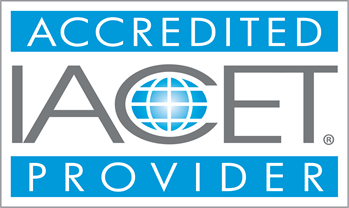Make Safety
Training
Happen
Course Modules - (74)
1) Basic Chemistry Concepts
2) General Chemistry Concepts
3) Nomenclature Chemistry
4) Naming Acids Introduction
5) How to Balance Chemical Equations in 5 Easy Steps: Balancing Equations Tutorial
6) Balancing Chemical Equations
7) Chemical Reactions Introduction
8) Chemical Reactions
9) Naming Compounds Test Review Practice
10) Kinetic Molecular Theory and the Ideal Gas Laws
11) Ideal Gases
12) Balance Chemical Equation Quiz
13) General chemistry concepts quiz
14) Weak interactions in aqueous systems (PH)
15) Acids, Bases, and pH
16) Determining and Calculating pH
17) Ideal Gas Law Quiz
18) PH and Alkalinity Practice Quiz
19) Acid Base Practice Test
20) Balance Chemical Equation Quiz
21) CSP/ASP (Certified Safety Professional) Exam Preparation VOL-5 | Domain-1|
1) Introduction to circuits and Ohm's law | Circuits | Physics |
2) Ohms Law Explained - The basics circuit theory
3) Storage capacity calculations
4) CSP/ASP (Certified Safety Professional) Exam Preparation VOL-5 | Domain-1|
1) Radioactivity: Expect the unexpected
2) The Development of Nuclear Science
3) NUCLEAR CHEMISTRY
4) Inverse Square Law
5) Radiation Sources, Measurement, and Intensity
6) Radioactivity - Half Life - Physics
1) Rigging Safety-RigRing Overhead load safety signaling device
2) Rigging Basics
3) Toolbox Talk: Steel Erection Safety
4) How to Calculate Load
5) Chicago Crane Operator Examination Study Guide
1) Elements of Ventilation Systems
2) Basic Concepts of Ventilation Design
1) Noise Exposure and Hearing Conservation
2) Noise Hazards in Occupational Health
3) Hearing Conservation Program Adapted to Agriculture
4) HEARING CONSERVATION PROGRAM
1) Heat Stress
2) PREVENTING HEAT STRESS IN THE WORKPLACE
3) Wet Bulb Globe Temperature (WBGT)
1) Fall Distance
2) Calculation fall distances
1) Central Tendency
2) Variability
3) Statistics - Intro to Probability
4) Descriptive statistics and probability distributions
1) Intro to Cost-Benefit Analysis
2) Cost Estimation: Concepts and Methodology
3) A Overview of Cost-Benefit Analysis
1) Leading and Lagging Indicators
2) Where to Start with Lead & Lag Safety Indicators
3) Safety Performance Indicators
4) Using Leading Indicators to Improve Safety and Health Outcomes OSHA
5) Leading and Lagging Indicators
1) What is an OSHA Recordable?
2) How to Calculate Accident Incident Rate
1) Real and Hidden Cost of Accidents | Direct & Indirect cost | Danger Signs |
2) Incidence Rates
3) Near Miss Reporting Systems
4) Near Miss Form
5) ABC Company Supervisor Safety Performance Appraisal
1) Hot Work Permit
2) Hot Work Permit Sample
1) Hierarchy of Controls
2) Administrative Controls The Hierarchy of Controls
3) Hierarchy of Hazard Controls
1) Risk Transfer
2) Insurance Transfers Risk - Why You Want Insurance Part 1
3) Insurance and Risk Transfer Basics for Construction Projects
1) Change in Magement
2) How to Define the Purpose of Management of Change
3) MANAGEMENT OF CHANGE
1) Introduction, Anatomy & Cumulative Trauma
2) Preventing Musculoskeletal Injuries
3) Toolbox Talk: Ergonomics in Construction
4) Prevention of Strains, Sprains, and Material Handling Injuries in Construction
1) Process Safety: Managing Risk in High-Hazard Sectors
2) Safety Management Systems (SMS) Fundamentals: Policy
3) Process Hazard Analysis
4) Process Safety Management (PSM) Quiz
1) Awkward & Neutral Postures
2) Practice Good Ergonomics at Work
3) Stressors At Work
4) Risk factors (e.g., repetition, force, posture, and vibration)
5) Design for Construction Safety
6) A Safety Manager’s Guide to EARLY INTERVENTION
7) TO THE POINT ABOUT HANDLING MATERIALS SAFELY Review Quiz
8) Identifying and Addressing Ergonomic Hazards Workbook
1) How to Conduct a Change Analysis
2) The energy trace and barrier analysis (ETBA)
3) Hazard Analysis Using the Hazard Identification Checklist
4) CHEMICAL PROCESS HAZARDS ANALYSIS
5) WHAT-IF” HAZARD ANALYSIS
1) Fault Tree Analysis
2) Fault Tree Analysis Explained with Examples
3) How to use - Process FMEA explained
4) Preliminary Hazard Analysis
5) Fishbone Diagram Explained with Example
6) Fishbone Diagram - Ishikawa Diagram - Cause and Effect Diagram
7) Subsystem Hazard Analysis
8) Control of Hazardous Energy
1) 6 Essential Elements of Your Fleet Safety Program
2) MOTOR VEHICLE SAFETY AT WORK
3) Distracted Driving and Driver Fatigue
4) MOTOR VEHICLE SAFETY POLICY
5) Fleet Safety Policy—Regulated
1) Globally Harmonized System of Classification & Labeling of Chemicals
2) The Globally Harmonized System of Classification and Labeling of Chemicals
1) Lock out tag out
2) OSHA 1910.147 - Control of Hazardous Energy
1) Safety Toolbox Talks: Trenching and Excavation Safety
2) Excavations in Construction/Trenching OSHA
3) Excavations in Construction/Soil Classification
4) Trenching, Shoring and The Competent Person
5) What are the Different Types of Soil? Trenching and Excavation
6) What is the Maximum Slope for Different Soil Types? Sloping and Benching |
7) Inspecting a Trench for Fissures and Cracking
8) Underpinning Explainer
9) Excavation Hazardous Atmosphere
10) Trenching and Excavation Safety Fact Sheet
1) TRENCHING & EXCAVATION SAFETY
2) Trenching and Excavation Safety
3) Trenching and Excavation Safety
1) Identifying Confined Spaces
2) What is a Confined Space
3) 6 Common Confined Space Questions Answered
4) Confined Space Basics
5) DEFINITIONS AND EVALUATION OF CONFINED SPACES
1) Permit-Required Confined Space
2) Permit Confined Space Entry
3) Permit-Required Confined Space
4) Permit
1) Security Awareness Training: Physical Security
2) Best Practices for Planning and Managing Physical Security Resources:
1) What is Fall Protection
2) Risk Assessment | Planning to Use Fall Protection,
3) Competent vs Qualified Person
4) ABC of Fall Protection
5) Falling Object Protection | Tool Lanyards, Safety Nets, Fall Protection,
6) Overview of Fall Protection Options
7) Elimination of Fall Hazards
8) Fall Prevention | Guardrails, Hole Covers, Fall Restraint Systems
9) Warning of Fall Hazards | Warning Lines, Safety Monitor System,
10) Vertical and Horizontal Lifelines
11) Fall Protection
12) Self-Retracting Lifelines (SRLs), Fall Arrest, Positioning Devices, Safety Nets | Fall Protection
13) Self Retracting Lifelines (SRLs), Fall Arrest, Positioning Devices, Safety Nets | Fall Protection
14) Fall Protection in Construction
1) Unguarded Machinery/ Self-inspection checklist - - Machine guarding
1) OSHA Regulations & Required Training for Powered Industrial Truck Operators
2) OSHA 29 CFR 1910.178
3) Updating OSHA’s Construction Industry Standard for Powered Industrial Trucks 29 CFR 1926.602
1) Frame Scaffold or Fabricated Frame
2) Ladder Jack
3) Mast Climbers
4) Mobile (Manually or Propelled)
5) Pole or Wood Pole
6) Pump Jack
7) Specialty and Other Scaffolds
8) Tube and Coupler
1) Catenary
2) Float (ship)
3) Interior Hung
4) Multi-level
5) Multi-point Adjustable
6) Needle Beam
7) Single-point Adjustable
8) Two-point (swing stage)
1) Fit for Duty
2) Fatigue Management
3) FIT FOR DUTY PROGRAM
1) Ergonomics Basics
2) Controlling Ergonomic Hazards
3) A Safety Manager’s Guide to EARLY INTERVENTION
4) Identifying and Addressing Ergonomic Hazards Workbook
5) INDUSTRIAL ERGONOMICS TEST QUESTIONS
1) MATERIALS HANDLING AND EQUIPMENT
2) Materials Handling, Storage OSHA
3) TO THE POINT ABOUT HANDLING MATERIALS SAFELY Review Quiz
4) 4 Best Practices for Material Handling
5) Ergonomic Guidelines for Manual Material Handling
6) Ergonomics, Proper Lifting Techniques
1) Practice Good Ergonomics at Work
2) Body Mechanics and Ergonomics
3) Ergonomic Programs
4) 9 Steps to Start or Improve Your Ergonomics Program
5) Sample-Ergonomics-Program-for-Company
6) Ergonomics, Proper Lifting Techniques
7) Ergonomics Program
8) Ergonomic Workplace Design
1) Welding Hazard and Safety Precaution
2) Hot Work: Hidden Hazards
3) Grinder Safety | How to Properly Use an Angle Grinder
4) Blankets
5) Welding Safety Tips and Precautions You Need to Know
6) Welding and Cutting
7) Cutting, Welding, and Other Hot Work
8) HOT WORK FACT SHEET
1) Ergonomics and Anthropometrics
2) What is Ergonomics
3) Muscle Metabolism
4) Ergonomics Awareness:
1) Physical vs Chemical Properties - Explained
2) CHEMISTRY 101 - Chemical and physical properties and changes
3) Chemical Hazards
4) Corrosivity
5) HAZARD RECOGNITION
6) Hazardous Materials
1) Flash Point
2) Fire Extinguisher Training - PASS
3) HAZARDS OF FLAMMABLE GASES, LIQUIDS & AEROSOLS & RISK MINIMIZATION
1) Electrical Hazards
2) Grounding and Bonding
3) Ground Fault Circuit Interrupters
4) Protecting Against Arc Flash
5) What is a Power Surge?
6) Electrical Safety
1) Combustible Dust Safety Training
2) Combustible Dust
1) Explosive limits (LEL and UEL)
2) Fire tetrahedron | What are the elements required in order to ignite fire
3) Fire science
1) What is a Fire Alarm System?
2) IONIZATION DETECTORS How Do Smoke Detectors Work?
1) How fire sprinkler systems work (3D Animation)
2) CO2 Laser Machine Fire Suppression System
3) Suppression systems, fire extinguishers, sprinkler types
4) Fire Suppression System Simulation
5) Fire Extinguisher Training - PASS
6) Fire Suppression Systems Training Part 1: Follow the Water
7) Fire Suppression System Training Part 2: Valves
8) Fire Suppression System Simulation
9) Fire Extinguisher Training - PASS
10) FIRE PROTECTION SYSTEMS
1) Hazardous Material Storage – Flammable Liquid Storage and Use
2) Chemical Storage
1) HOUSEKEEPING AT CONSTRUCTION SITE(TIPS)
2) Housekeeping - The importance of the basics
3) Housekeeping on the Jobsite
4) Good Housekeeping: Safety Training
5) GOOD HOUSEKEEPING PRACTICES AT WORK
1) Workplace Violence Prevention
2) Safety Expert Reveals Five Tips For Surviving A Workplace Shooting
3) Workplace Violence
4) Workplace Violence OSHA Fact Sheet
5) Sample Policy for Violence in the Workplace
1) Hurricane Preparedness for Small Businesses
2) An Introduction to Emergency Preparedness
3) Four Phases of Emergency Management
4) The Logistics of Disaster Response
5) Emergency Preparedness Training Presentation
6) Sample Emergency Plan
7) EMERGENCY RESPONSE MANAGEMENT
8) Business Crisis and Continuity Management and Planning
9) How to Plan for Workplace Emergencies and Evacuations
1) Biological Hazards
2) Biological Hazards
1) BLOODBORNE PATHOGENS TRAINING VIDEO
2) Bloodborne Pathogens PPT
1) Carcinogens, Mutagens, Teratogens and Reproductive Toxins
2) Mutagens and carcinogens
3) Teratogens Introduction
1) Routes of Exposure
2) Routes of Exposure
3) Routes of entry Quiz
1) Threshold Limit Value (TLV)
2) Hands-on Activity Demonstration: Choosing an Occupational Exposure Limit
3) Health Hazards in Construction
1) NIOSH POCKET GUIDE TO CHEMICAL HAZARDS
2) Chemical Toxicology
1) ALARA and Radiation Safety
1) Extinguisher Basics
2) Fire Extinguisher Use
3) Extinguisher Placement and Spacing
4) Hydrostatic Testing
5) OSHA Requirements
1) Noise Exposure and Hearing Conservation
2) Occupational Noise Exposure
3) Workplace Noise
4) Hearing Conservation Quiz
1) Protecting Workers from Cold Stress
2) Heat and cold stress
3) 5 Tips for Protecting Employees from Heat Stress
4) Working in The Cold
1) Learning Outcomes
2) Environmental hazards awareness molds
3) Biological Hazards
4) HAZARDOUS MATERIALS: A CITIZEN’S ORIENTATION
5) Chemical Hazards
6) Pest Control | Ecology & Environment | Biology
7) Solid Waste
1) Stormwater Pollution & Green Infrastructure Solutions
2) Developing Your Stormwater Pollution Prevention Plan
3) Funding Land Conservation Projects with the Clean Water State Revolving Fund
4) How Do Wastewater Treatment Plants Work?
5) Best Practices to Consider When Evaluating Water Conservation and Efficiency as an Alternative for Water Supply Expansion
1) REVISED AIR QUALITY STANDARDS FOR PARTICLE POLLUTION
2) Why Air Quality In The U.S. Is So Bad
1) Resource Conservation and Recovery
2) Solid Waste
3) Casella's Approach to Sustainable Recycling
4) Wetlands Protection
5) How Wetlands Manage Water
1) The Conservation Hierarchy
2) THE CONSERVATION HIERARCHY
3) THE CONSERVATION HIERARCHY
1) ISO 14001:2015 Environmental Management System
2) ISO 14001
1) Best Practices for Solid Waste Management:
2) Waste Management's Sacramento Recycling & Transfer Facility
1) The Most Common Mistake with Moles!
2) Introduction to Moles
3) Scientific Notation
4) Scientific Notation Practice
5) Moles Practice Test
1) Ergonomics Risk Factors
2) Machine guarding Quiz
3) Physical security
4) Ergonomics Risk Factors Quiz
5) Control of Hazardous Energy Lockout/Tagout Quiz
6) Trenching and Excavation Safety Quiz
7) Fall Protection Quiz
8) Powered industrial vehicles Quiz
9) ASP CSP EXAM QUESTIONS | MOCK EXAM 2 | ASSOCIATE/ CERTIFIED SAFETY PROFESSIONAL | 800 EXAM QUESTIONS
10) ASP Practice Test
1) Adult Learning Theories
2) Occupational Safety and Health Training Guidelines
3) Safety culture/climate
4) Data collection, needs analysis, gap analysis, and feedback
5) Assessing competency
6) How to Conduct a Training Needs Analysis
7) Gap Analysis: How is it done?
8) Feedback in Training
9) Assessing for Competency versus Assessing for Improvement
10) Adult Learning Principles
11) Train the trainer-Safety Health and Environment presentations
1) Legal
2) Ethical behavior
3) Protection of worker privacy
4) Ethics for Functional Safety Engineering
1) 3
2) 4
3) 5
4) 7
5) 8
6) ASP Practice Test
Learning Outcomes:
Preparing yourself for the ASP can be daunting, but with the right prep course, you can enhance your productivity and success.
Completion Requirements:
Online classes tend to be more cost-effective than in-person courses. You can save on travel expenses, lodging, and other associated costs, making online training a more budget-friendly option. Additionally, online courses can often be completed more quickly than their in-person counterparts, as you can work through the material at your own pace and without the constraints of a fixed class schedule.
Students may request IACET CEU credit upon successful completion of the course, provided all required criteria are met. This option is available for those who wish to receive official recognition of their continuing education.


